Syn.: Pinus sumatrana Mirb., nom. inval.
Family: Pinaceae Lindl.
Higher classification: genus Pinus L., subgenus Pinus, section Merkusia Businský
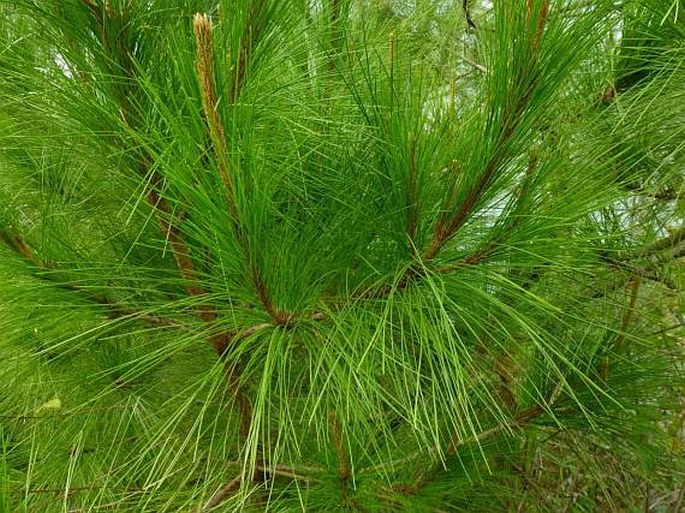
Distribution: Although this species in known for a long time from several regions of Malesia, e. g., Borneo, Java, Bali or Timor, its native distribution is confined to the Indonesian island of Sumatra. Information on its distribution in the mainland of former Indochina and on Chinese island of Hainan refer to the related species Pinus latteri Mason, whereas on the Philippinese islands of Luzon and Mindoro the second related species Pinus ustulata Businský occurs, also reported as P. merkusii until recently. Pinus merkusii on Sumatra is naturally distributed mainly in the north in the Aceh Province, and scattered E and S of Lake Toba in the Sumatera Utara Province, in total, between 1° and 6° N (but several growths near Lake Toba and also in some other places it the area are old plantations of the local origin, today hardly distinguishable from natural occurrences). A separate native occurrence exists south of the equator in three localities between 1°55′ and 2°08′ S in Kerinci-Seblat N. P. (i. e. c. 7–16 km W and around 15 km NE of the town of Sungaipenuh and c. 10 km E of Lake Kerinci). This occurrence represents the only natural populations of pines south of the equator in the world.
Ecology: Merkus Pine occurs on relatively dry ridges and ribs of hills or mountains and down through open slopes to mountain feet. It usually forms dominant stands, groups or strips among broadleaved tree growths of the tropical rainforest zone. Primary geologic ground are volcanic rocks on which acid podzolic soils of rather nutrient poor quality usually predominate. This pine often spreads into disturbed areas such as secondary and often grassy clearings on burned or deforested slopes and in valleys. The elevation range of P. merkusii is (200–)800–1500(–2000) m, in localities south of the equator only of 800–1500 m. Common accompanying broadleaved trees are Dipterocarpus, Dryobalonops, Hopea, Shorea laveifolia or Eusideroxylon zwageri. Tropical climate in the distribution area of this pine is characterized by turns of dry and wet seasons. In northern Sumatra, the dry season culminates around the turn of June/July and from September to April rainfall is frequent and irregular; in the southern distribution area of P. merkusii, the dry season is less distinct at the same time. The mean annual precipitation at ca. 1000 m asl. is between 1700 to 2200 mm in the north, and around 2200 mm in the south; mean annual temperature is ca. 20 °C.
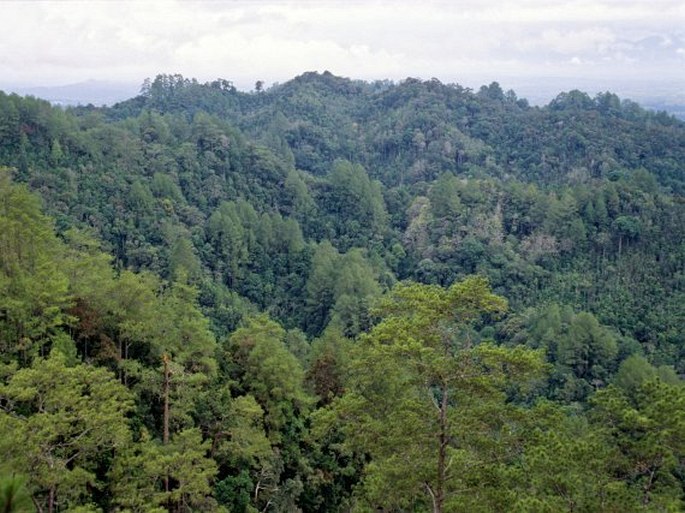
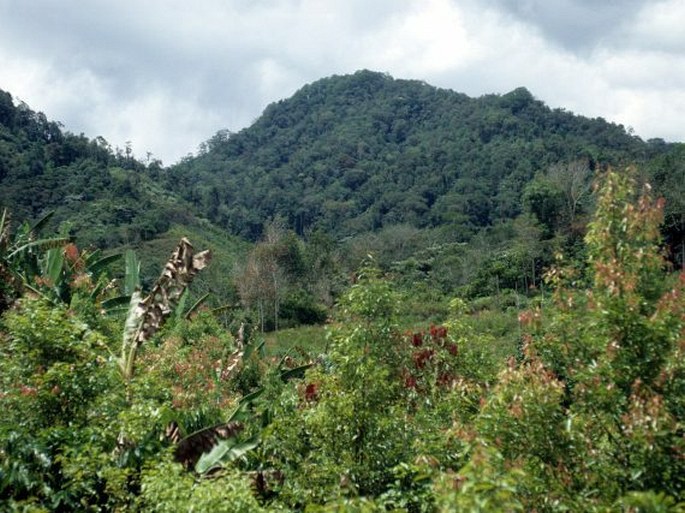
Description: Tree 25–50(–60) m tall with relatively slender trunk to 0.9(–1.2) m in diameter; bark relatively thin and irregularly scaly, with usually indistinct, shallow fissures; crown of adult trees conical or cylindrically conical, usually relatively regularly branched, with rounded apex usually only in aged individuals; branchlets slender with relatively fine foliage. Vigorous shoots forming 2 to 4 successively growing internodes per year (gradinodal), often with ovulate cones on each node. Needlelike leaves usually in fascicles of two, with persistent, initially (10–)12–17 mm long sheath, pliant, usually spreading when mature, (11–)13–19(–22) cm long and (0.7–)0.8–1(–1.1) mm wide, with acute apex and minutely serrate edges, bright green; resin ducts (3–)5–10 median or internal to septal, from which (2)3–4(5) dorsal plus 2 near the leaf edges and (0)1–3 ventral, all of relatively small diameter, hypodermis formed by (1–)2–4(–5) layers of cells, endodermis with cells usually of unequal, often large size. Male strobili ca. 2–3 cm long and ca. 0.5 cm wide, maturing and shedding pollen chiefly from March to June but often also throughout other months of the year. Ovulate strobili (conelets) solitary, in pairs to polymerous clusters. Cone development annual, seed cones maturing after 12–14 months from pollination without interruption in winter season; mature seed cones ± spreading on slender, 3–8(–10) mm long peduncle, closed cones cylindrical or elongate conical, 5–10(–11) cm long and (4.5–)5–6.5(–7) cm wide when fully open, with largest seed scales 13–16 mm wide, relatively thin and fragile; apophyses almost flat or convex in distal part, glossy, umbo unarmed or with indistinct minute mucro shifted from the transverse keel to the distal part of the umbo; cones falling soon after releasing seeds or weakly staying attached for some time. Seeds including the wing ca. 20–30 mm long; seed corpus ca. 5–7 mm long; wing effective, generally oblique, ca. 17–25 mm long; 48–64 seeds per gram. Young seedlings exhibit noticeable apical dominance, slender, with distinct internodes (these traits differ conspicuously from those of Pinus latteri and Pinus ustulata).
Taxonomic notes: Pinus merkusii, described from Sumatra, represents the oldest name of the group of three related species constituting the separate Pinus merkusii aggregate, formally recently classified as the section Merkusia. Chiefly in forestry literature, this group has been usually accepted as a single species under the broad name „P. merkusii“ with three „races“, the continental, Sumatran and Philippinese. Although the continental taxon was described under four names in 1847, 1849, 1944 and 1970, only in the last mentioned year it was compared with the Sumatran taxon and found to be very different as a separate species which correct name is Pinus latteri Mason (1849). Only the recent revision (R. Businský in Phyton 54, 1–26, 2014) revealed that also the Philippinese populations (known for a long time from islands of Luzon and Mindoro) represent the third separate species described as Pinus ustulata Businský.
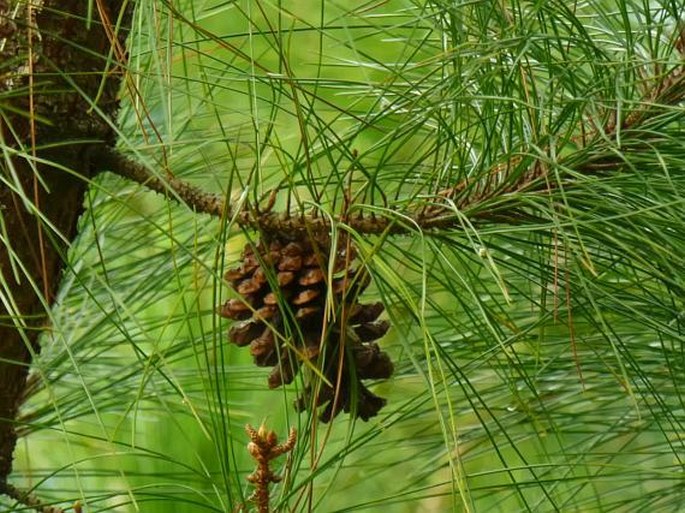
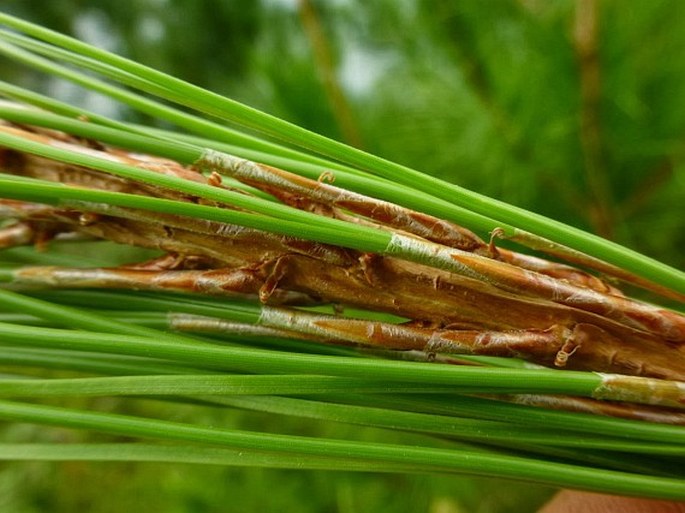
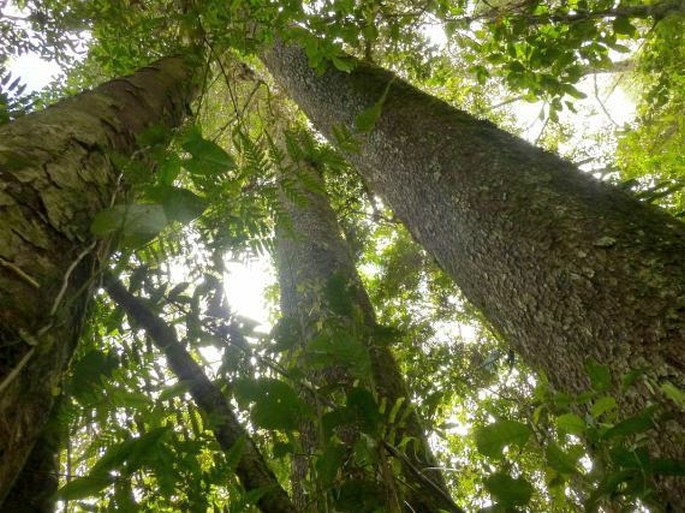
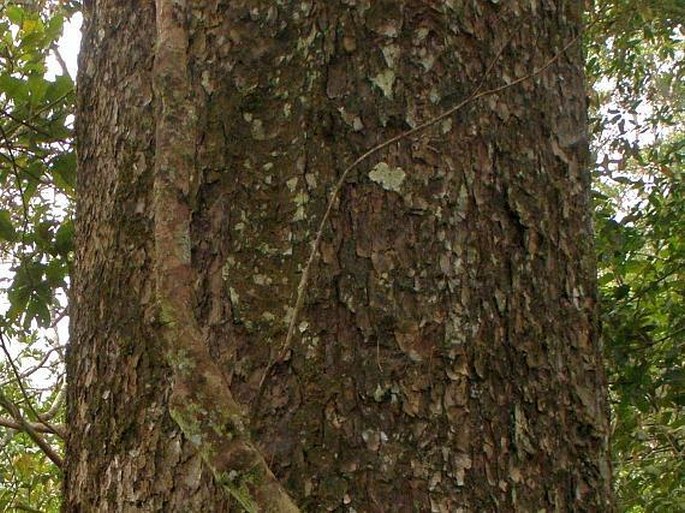
Endangering and Protection: Pinus merkusii is not endangered species; its regeneration is generally good and populations rather expand into secondary sites than diminish their extents. The most actual threat represent the large-scale fires. The populations south of the equator are relatively small and isolated and the trees are there more scattered with scanty dominance among broadleaved trees. However, these populations are protected within Kerinci-Seblat N. P. and most of old trees are registered by numbers.
Use: Merkus Pine is the important tropical pine used in forestry in Sumatra and other regions on Malesian islands. It is used as a source of wood material suitable for various use as timber favoured for house construction in Sumatra. The heartwood is light reddish brown without distinct growth rings, the specific gravity is about 500 kg/m3. Adult trees are often used for extraction of resin.
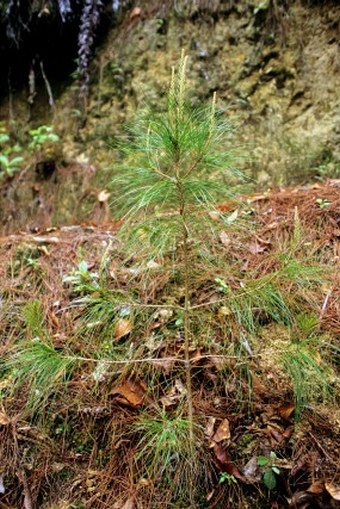
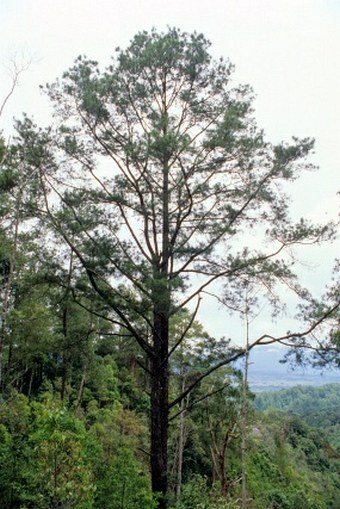
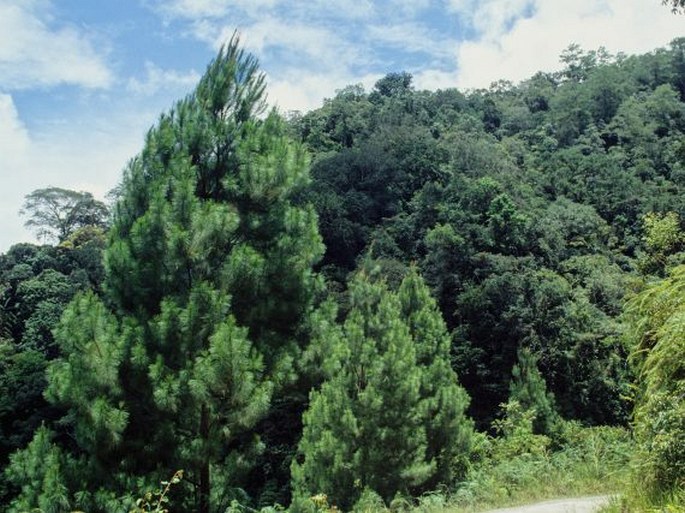
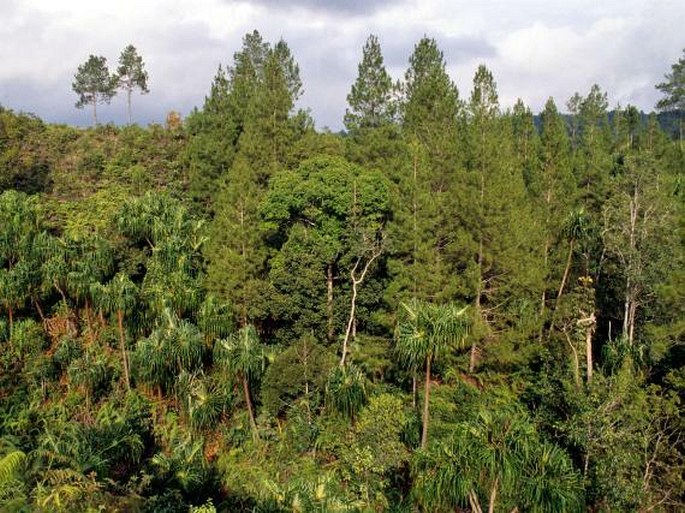
These images were taken by Roman Businský in March 1994 in Sumatra: Sumatera Utara Province, Tarutung, vicinity of Pangaribuan village (region of the type locality), 1100–1350 m; Kerinci-Seblat N. P.: Bukit Sigi hill, 1200–1300 m (the southernmost native Pine locality in the world), and at the road from Sungaipenuh to Tapan, 1000 m; and by Mário Duchoň in February 2013, Indonesia, Sumatra, Aceh Province, Owaq and Gunung Leuser National Park, Mt. Kemiri.


